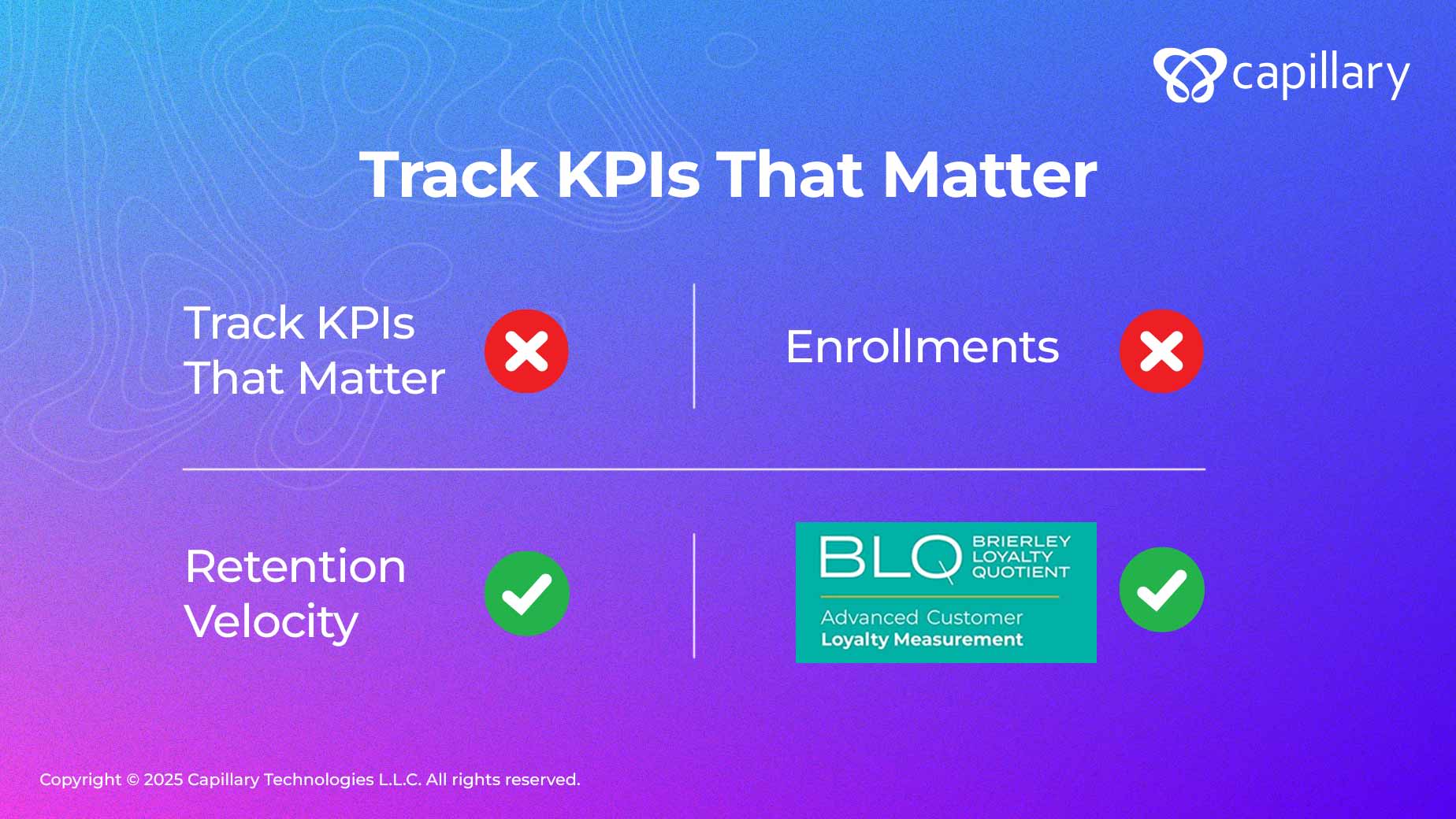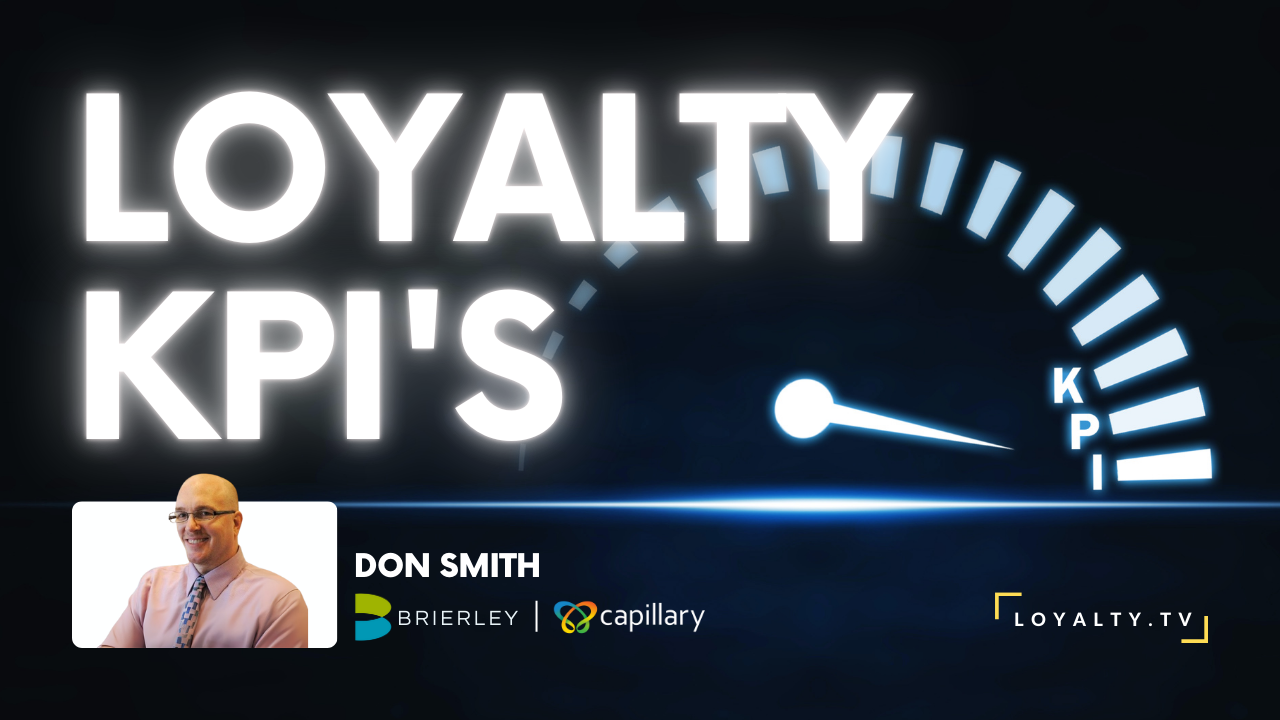Rethinking Loyalty KPIs: Why Measurement Needs a Makeover in the Age of Customer Capital

The era of passive loyalty is over. We’re now in a new phase—where brands must earn more than repeat purchases. Emotional allegiance, behavioral momentum, and economic contribution must all be cultivated across every customer relationship.
This shift demands a rethinking of how loyalty is measured. Most brands still track enrollment, redemptions, and Net Promoter Scores—metrics that are often static, shallow, and prone to misinterpretation. They are useful only inasmuch as they point to something deeper: a customer’s evolving connection to the brand, and the brand’s role in shaping it.
The challenge before us is clear: our KPIs must evolve as fast as the customers they aim to measure.
The Illusion of Insight: Loyalty Metrics That Miss the Mark
Too many loyalty programs confuse metrics with meaning. Tracking point accrual, redemption, or even repeat purchase tells us what customers did—but not why, and certainly not what they might do next.
Loyalty is not a linear path; it’s a dynamic, emotional, and economically variable journey. The brands outperforming today treat KPIs not as a reporting task but as a strategic diagnostic, not as a dashboard exercise, but as a diagnostic and strategic discipline.
Let me be blunt: If your loyalty scorecard isn’t guiding commercial decisions, it’s not a KPI—it’s a vanity metric.
A Strategic Reframing: From Operational Reporting to Loyalty Intelligence
At Brierley (a Capillary services company), we’ve worked with hundreds of global brands to restructure how loyalty is measured. What we’ve learned is this:
The most effective loyalty KPI frameworks measure across three dimensions: behavior, emotion, and economics.
These aren’t silos—they’re interdependent levers that, when aligned, provide a full-spectrum view of customer health, potential, and program performance.
Let’s examine each in turn.
1. Behavioral KPIs: Measuring Actions That Matter
What it captures: Actual customer behavior—transaction patterns, engagement frequency, and program interactions.
Key Metrics:
Retention Velocity: Don’t just track whether customers return. Measure how their value evolves over time—rising, declining, or dropping off. This reveals loyalty movement in a way static retention rates can’t.
BALOR (Becoming Active to Lapsing Out Ratio): This diagnostic reveals whether acquisition and win-back efforts are bringing in valuable, engaged members—or just masking churn.
Engagement Gradient: Move beyond “active/inactive.” Segment customers by engagement depth—frequency, channel diversity, and speed to first redemption.
These metrics allow loyalty teams to stop chasing participation and start optimizing quality of interaction.
2. Emotional KPIs: The Loyalty You Can’t See (But Must Measure)
What it captures: How customers feel about the brand—critical for predicting advocacy, forgiveness, and long-term engagement.
Rational loyalty can be bought; emotional loyalty must be earned—and it delivers outsized ROI.
Key Metrics: BLQ: The Brierley Loyalty Quotient
To quantify this elusive dimension, we developed the Brierley Loyalty Quotient (BLQ)—a proprietary diagnostic that blends rational loyalty (value, convenience, satisfaction) with emotional loyalty (identity, trust, advocacy).
We use the BLQ framework to assess both:
Rational Loyalty: satisfaction, value for money, ease of use
Emotional Loyalty: brand trust, identity alignment, willingness to advocate
Why it matters:
Emotionally connected customers spend up to 2x more per visit
They’re 2–3x more likely to refer others
They’re more forgiving of poor experiences
They actively seek brand interactions—even beyond transactions
Our data confirms what leading research has long shown:
Emotionally connected customers spend up to 2x more per visit
They are more likely to forgive poor service or product issues
They actively want to interact with the brand, even outside of buying moments
Measuring emotional loyalty reveals not just how customers behave, but why they behave that way. It exposes soft spots in brand perception, gaps in the customer experience, and untapped advocacy potential.
This is where loyalty measurement graduates from analytics to brand strategy.
3. Economic KPIs: Loyalty That Pays
Too often, loyalty is judged by cost—discounts issued, rewards redeemed, offers applied. But the true test is whether it delivers sustainable financial impact.
Effective programs track:
Incremental CLV Lift: Are loyalty members worth more over time—net of discounts and promotions?
Redemption Margin Yield: Are rewards replacing markdowns—or stacking up and eroding profitability?
Next Best Action ROI: Which interventions generate the highest returns by segment or individual?
A detailed margin attribution model—across discounts, CRM offers, and loyalty certificates—helps reveal whether your best customers are building margin or quietly diluting it.
Application in Practice: A Loyalty Intelligence Case Study
Sector: Fashion Retail
Challenge: High loyalty membership but low repeat purchase behavior
Solution:
Deployed BALOR to reveal that new members weren’t progressing to active status
Used product-level indices to identify which SKUs increased engagement
Introduced emotionally driven campaigns based on BLQ findings
Tracked impact through redemption stretch, margin attribution, and CLV modeling
Outcome:
17% increase in retention velocity
29% improvement in emotional loyalty (BLQ)
12% increase in profitability among highly engaged segments
From Scorecards to Strategy: Operationalizing the Metrics
Loyalty KPIs must be linked to action. We guide brands to build “Next Best Action” frameworks—structured, testable strategies that connect insights to outcomes.
These frameworks:
Align business goals with behavioral science
Sequence interactions to deepen emotional loyalty
Personalize communication with precision
Test, learn, and adapt continuously
A loyalty program should never exist in isolation. It must be embedded across CX, product, marketing, and finance—and your KPIs must reflect that cross-functional reality.
The Future: From Loyalty Program to Loyalty Enterprise
In 2025 and beyond, loyalty won’t just be a “program.” It will be an enterprise-wide strategy—shaping how a brand acquires, engages, serves, and grows its customers.
That demands a new kind of measurement:
Fluid
Contextual
Emotionally intelligent
Economically rigorous
If your loyalty KPIs don’t support that vision, the time to evolve them isn’t tomorrow—it’s now.
Watch the video as Don shares his expertise around optimizing some of the common KPI’s for loyalty professionals, the importance of the “mental mantle” of loyalty, as well as some of the big nuggets he learned from the recent Capillary Captivate 2025 Conference.
Ready to transform how you measure loyalty?
Connect with our experts to build a KPI framework that drives real growth.
Author Bio:
Don Smith is the Global Chief Consulting Officer at Brierley, a Capillary Technologies company. He advises global brands on loyalty strategy, customer intelligence, and business model transformation.
For more insights on how to architect high-impact loyalty frameworks, connect with Don on [LinkedIn] or visit Capillary Technologies.


